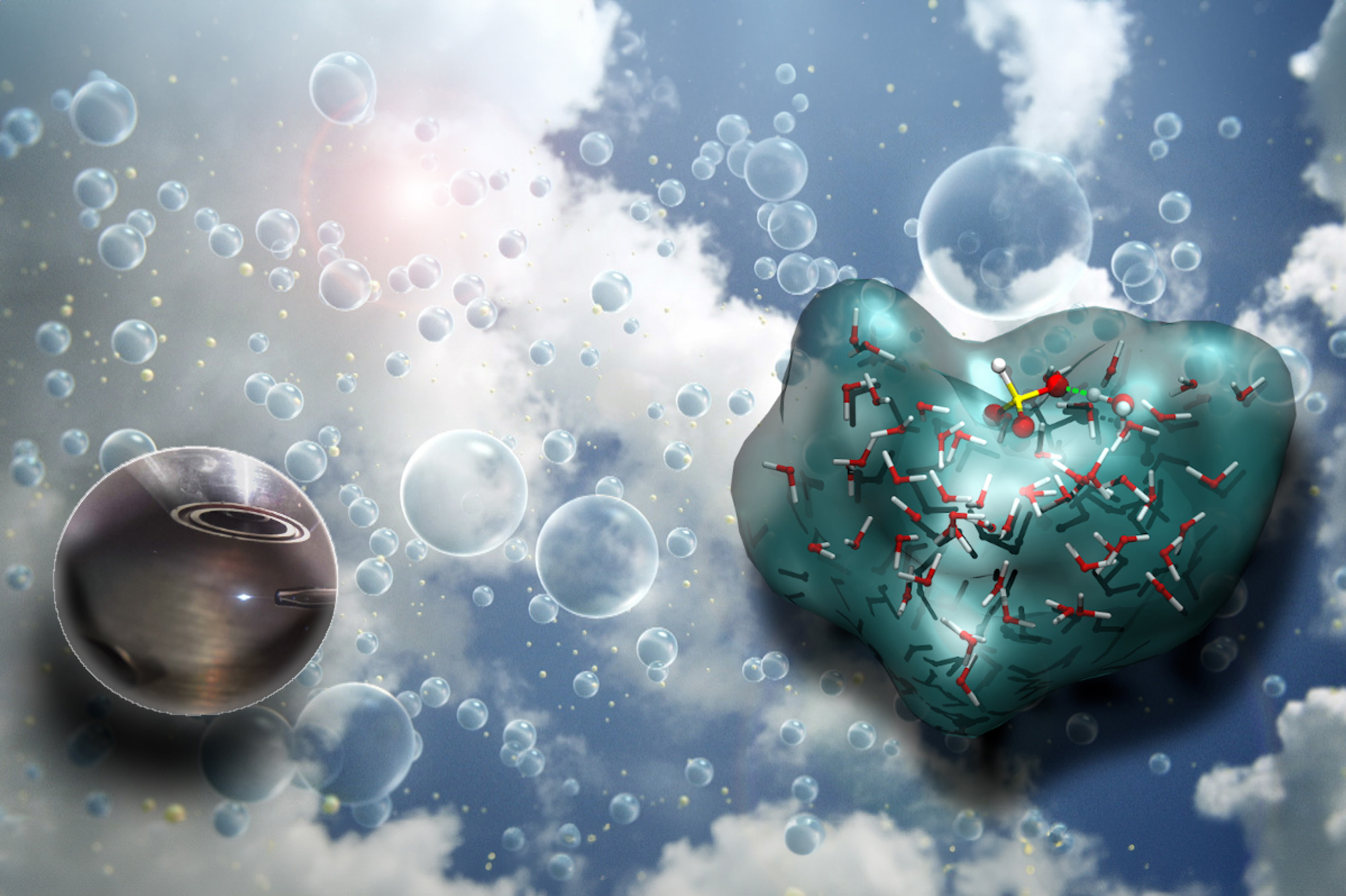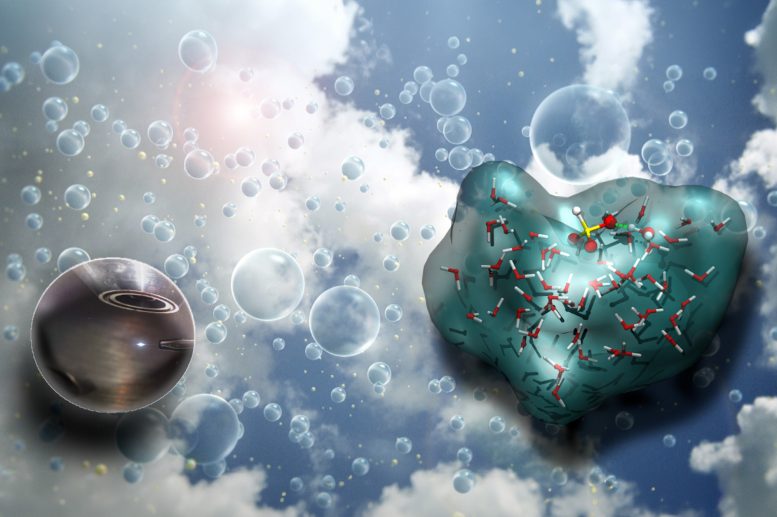

A new study examines acid-base equilibria at the liquid-vapor interface, revealing how sulfur dioxide reacts differently there, impacting air pollution and atmospheric chemistry.
An international study examines the differences in complex acid-base equilibria—specifically, the balance between acidic and basic components—both within the bulk of a solution and at the interface between the solution and the surrounding vapor.
While it is straightforward to measure acid-base equilibria in the bulk of a solution using state-of-the-art methods, determining these equilibria at the boundary between a solution and the surrounding gas phase is challenging. Even though this boundary layer is about one hundred thousand times narrower than a human hair, it plays a very important role in processes that influence air pollution and climate change.
Examining the chemistry of the solution-vapor boundary on a molecular scale thus helps to develop improved models for our understanding of the fate of aerosols in the atmosphere and their influence on the global climate.
Key Findings:
- Complex acid-base equilibria determined: The researchers used complementary spectroscopic methods to unravel the complex acid-base equilibria that result when the pollutant sulfur dioxide (SO2) is dissolved in water.
- Unique behavior at the liquid-vapor interface: Under acidic conditions, the tautomeric equilibrium between bisulfite and sulfonate is strongly shifted towards the sulfonate species.
- Stabilization at the interface: Molecular dynamic simulations revealed that the sulfonate ion and its acid (sulfonic acid) are stabilized at the interface due to ion pairing and higher dehydration barriers, respectively. This explains why the tautomeric equilibria are shifted at the interface.
Implications for Air Pollution:
The findings highlight the contrasting behaviors of chemicals at the interface versus the bulk environment. This difference significantly impacts how sulfur dioxide is absorbed and reacts with other pollutants like nitrogen oxides (NOx) and hydrogen peroxide (H2O2) in the atmosphere.
Understanding these processes is crucial for developing strategies to reduce air pollution and its harmful effects on health and the environment.
Reference: “Direct observation of the complex S(IV) equilibria at the liquid-vapor interface” by Tillmann Buttersack, Ivan Gladich, Shirin Gholami, Clemens Richter, Rémi Dupuy, Christophe Nicolas, Florian Trinter, Annette Trunschke, Daniel Delgado, Pablo Corral Arroyo, Evelyne A. Parmentier, Bernd Winter, Lucia Iezzi, Antoine Roose, Anthony Boucly, Luca Artiglia, Markus Ammann, Ruth Signorell and Hendrik Bluhm, 18 October 2024, Nature Communications.
DOI: 10.1038/s41467-024-53186-5